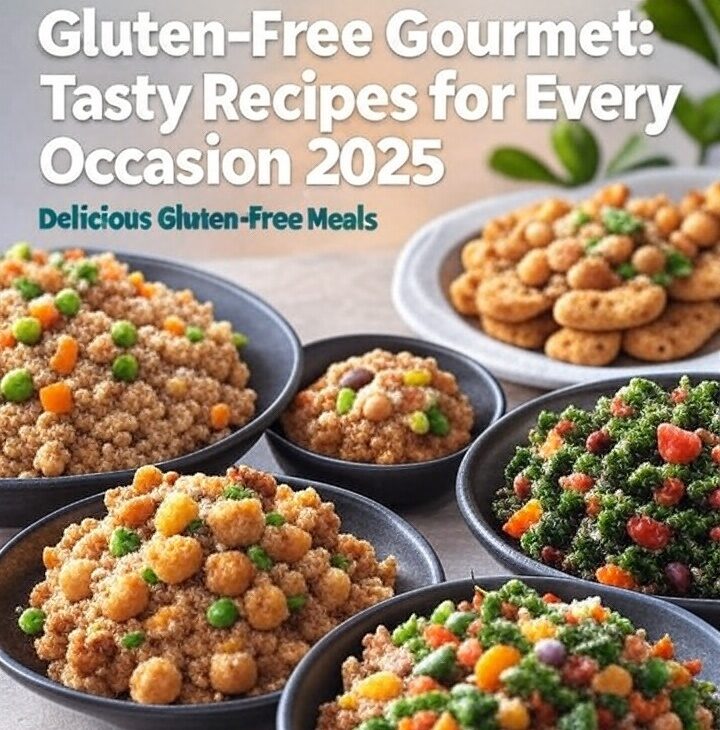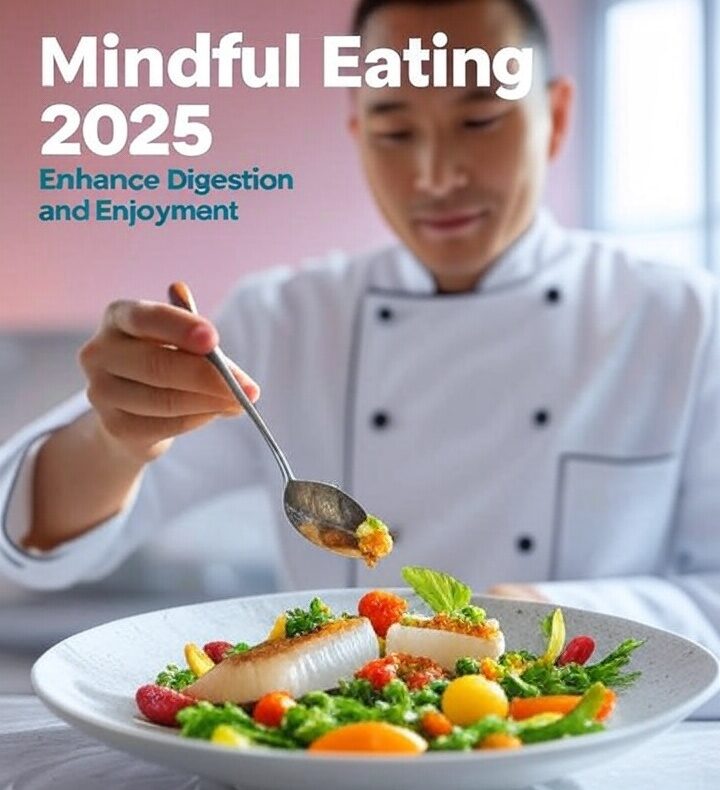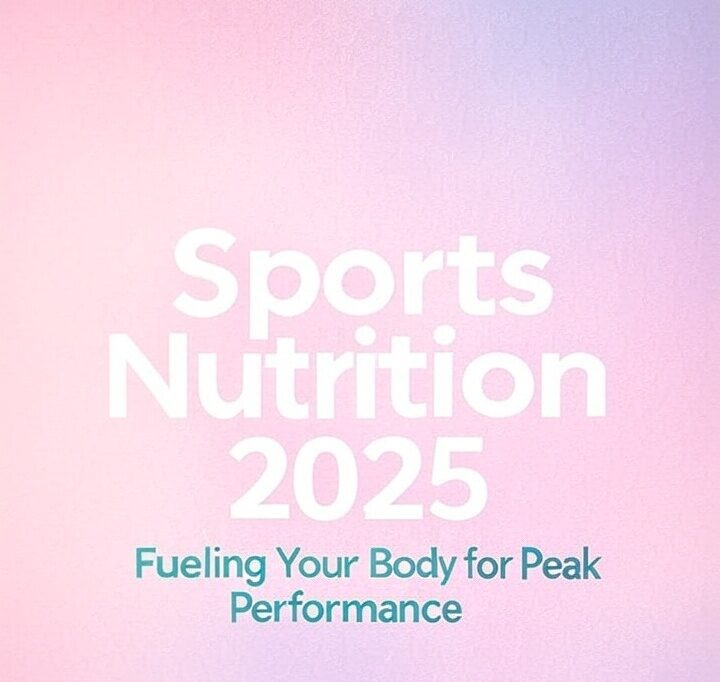Gluten-free eating is more than a necessity—it’s a delicious adventure with culinary nutrition in 2025. Designed for celiac disease or gluten sensitivities, gluten-free diets support nutritional meal planning and anti-inflammatory recipes, promoting digestive health and overall wellness. In 2025, the demand for gluten-free options soars, with a 15% rise in app usage like Find Me Gluten Free (over 600,000 users in 2024), reflecting personalized diet strategies for tailored nutrition.
This guide offers five gluten-free recipes featuring superfoods from our Top 10 Superfoods (#) guide, using alternative flours like almond and quinoa, plus healthy cooking tips for flavorful meals. From pancakes to pizza, these dishes elevate your table for every occasion, alongside dining out strategies to navigate menus confidently. Embrace culinary nutrition for gluten-free gourmet meals and explore our Ultimate Guide to Culinary Nutrition (#) for more special diet tips! Which gluten-free recipe will you try first?
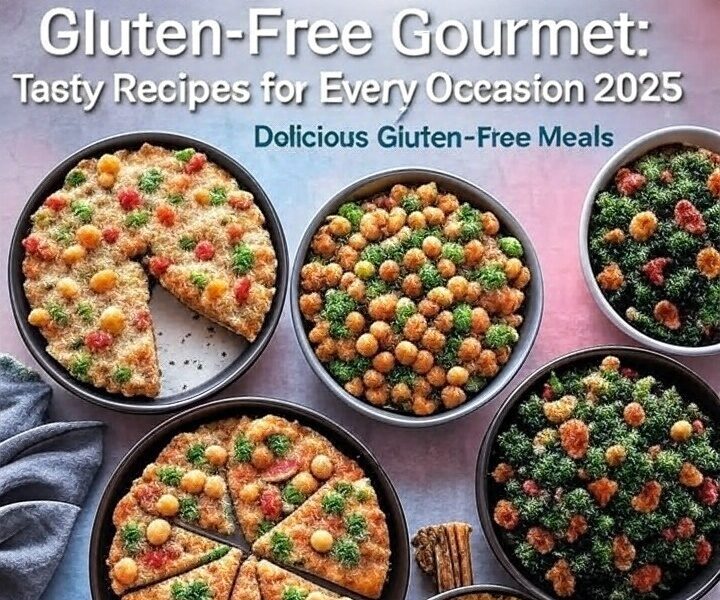
Section 1: Exploring Alternative Flours
Culinary nutrition thrives with gluten-free flours, transforming meals for those with celiac disease or sensitivities. Almond flour, quinoa flour, coconut flour, and chickpea flour are nutrient-dense options for baking and cooking. Almond flour, rich in healthy fats, supports anti-inflammatory recipes, while quinoa and chickpea flours offer protein and fiber for satiety. In 2025, quinoa and chickpea flours gain traction in gluten-free products like breads and pastas, per recent studies, aligning with sustainable food practices due to their low environmental impact.
For nutritional meal planning, use almond flour for moist cakes, chickpea flour for savory flatbreads, or blend flours for optimal texture. Healthy cooking tips like sifting flours ensure smooth consistency, enhancing dishes from pancakes to pizza. These versatile flours make culinary nutrition accessible, catering to diverse tastes while prioritizing health. Apps like Yummly (600,000+ users in 2024) offer gluten-free recipe ideas to simplify prep. Explore these flours and visit our Ultimate Guide to Culinary Nutrition (#) for more personalized diet strategies!
Section 2: Recipe 1 – Quinoa Flour Pancakes
This gluten-free breakfast enhances culinary nutrition with a delicious, nutrient-packed start to your day. Recipe: Mix 1 cup quinoa flour, 1 cup almond milk, 1 tbsp maple syrup, and 1 tsp baking powder in a bowl. Pour batter onto a non-stick pan, cooking 2-3 minutes per side for 2 pancakes (15 min total, ~300 calories). Nutritional Breakdown: ~300 calories, 10g protein, 8g fat, 45g carbs, high in fiber.
Benefits: Fiber-rich quinoa supports digestive health and aligns with anti-inflammatory recipes, reducing inflammation, per 2025 research. Cooking Methods: Pan-cooking with minimal oil is a healthy cooking tip that keeps calories low while ensuring a fluffy texture. This recipe fits personalized diet strategies for gluten-free breakfasts. Add it to your nutritional meal planning and explore our Ultimate Guide to Culinary Nutrition (#) for more anti-inflammatory recipes!
Section 3: Recipe 2 – Chickpea Flour Flatbread with Veggies
This savory flatbread reflects culinary nutrition with a gluten-free, nutrient-rich meal perfect for any occasion. Recipe: Mix ½ cup chickpea flour, ½ cup water, and 1 tsp olive oil to form a batter. Cook in a non-stick pan over medium heat for 3-4 minutes per side to make a flatbread. Top with 1 cup sautéed spinach and ½ cup diced tomatoes (20 min total, ~350 calories). Nutritional Breakdown: ~350 calories, 12g protein, 10g fat, 50g carbs, high in iron.
Benefits: Protein and iron boost energy, aligning with anti-inflammatory recipes to support health, per 2025 research. Cooking Methods: Pan-frying with minimal oil is a healthy cooking tip for a crisp texture. Using simple, plant-based ingredients, this dish supports sustainable food practices. Add it to your nutritional meal planning and explore our Ultimate Guide to Culinary Nutrition (#) for more anti-inflammatory recipes!
Section 4: Recipe 3 – Almond Flour Veggie Pizza
This gluten-free pizza boosts culinary nutrition with a nutrient-dense, flavorful dinner option. Recipe: Mix 1 cup almond flour, 1 egg, and 1 tbsp olive oil to form a dough. Press into a thin crust and bake at 400°F for 10 minutes. Top with ½ cup marinara, sliced zucchini, and bell peppers, then bake for 10 more minutes (25 min total, ~400 calories). Nutritional Breakdown: ~400 calories, 15g protein, 20g fat, 25g carbs, high in vitamin E.
Benefits: Low-carb and rich in healthy fats, it supports anti-inflammatory recipes for heart and digestive health, per 2025 research. Cooking Methods: Baking is a healthy cooking tip that reduces oil use while ensuring a crispy crust. This pizza enhances nutritional meal planning for gluten-free dinners. Try it for your next meal and explore our Ultimate Guide to Culinary Nutrition (#) for more anti-inflammatory recipes!
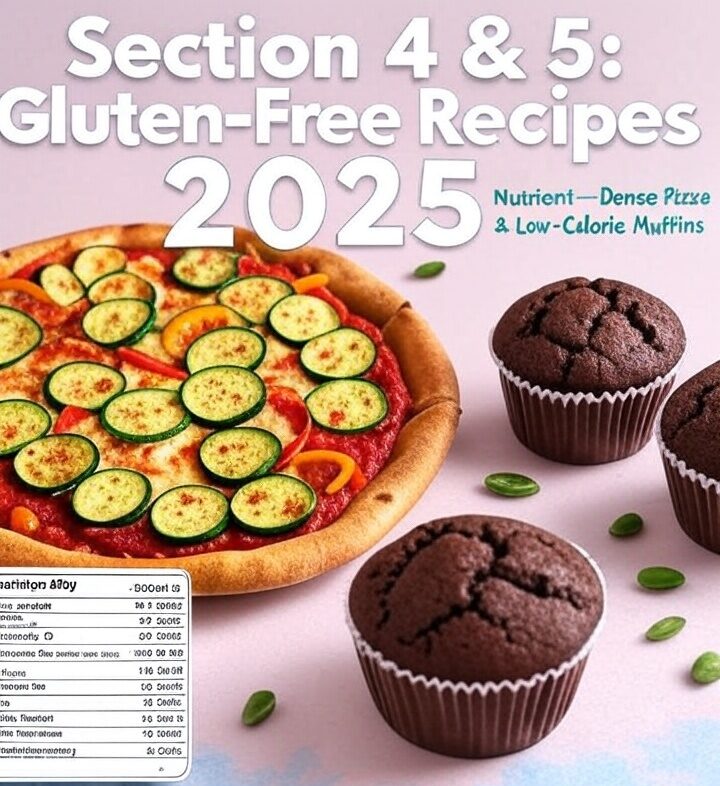
Section 5: Recipe 4 – Coconut Flour Chocolate Muffins
These gluten-free muffins enhance culinary nutrition with a delicious, low-calorie treat for any occasion. Recipe: Mix ½ cup coconut flour, ¼ cup cocoa powder, ¼ cup maple syrup, 2 eggs, and ½ cup almond milk to form a batter. Divide into 6 muffin cups and bake at 350°F for 20 minutes (25 min total, ~250 calories for 2 muffins). Nutritional Breakdown: ~250 calories, 8g protein, 10g fat, 30g carbs, high in fiber.
Benefits: Coconut flour’s fiber satisfies sweet cravings while aligning with anti-inflammatory recipes for digestive health, per 2025 research. Cooking Methods: Baking is a healthy cooking tip that keeps desserts low-calorie and nutrient-rich. This recipe fits personalized diet strategies for gluten-free treats. Add it to your nutritional meal planning and explore our Ultimate Guide to Culinary Nutrition (#) for more anti-inflammatory recipes!
Section 6: Recipe 5 – Quinoa and Kale Salad
This vibrant salad simplifies culinary nutrition with a gluten-free, nutrient-packed lunch option. Recipe: Cook ½ cup quinoa in water (10 min). Toss with 1 cup chopped kale, ¼ cup sliced almonds, and 2 tbsp lemon dressing (1 tbsp lemon juice, 1 tbsp olive oil) for a fresh dish (20 min total, ~350 calories). Nutritional Breakdown: ~350 calories, 12g protein, 15g fat, 40g carbs, high in vitamin K.
Benefits: Fiber from quinoa and antioxidants from kale support anti-inflammatory recipes, promoting wellness and digestive health, per 2025 research. Cooking Methods: No-cook assembly after quinoa preparation is a healthy cooking tip for quick, nutrient-rich meals. This salad streamlines nutritional meal planning for gluten-free lunches. Add it to your weekly menu and explore our Ultimate Guide to Culinary Nutrition (#) for more anti-inflammatory recipes!
Section 7: Dining Out Gluten-Free
Dining out gluten-free supports culinary nutrition by ensuring safe, delicious meals for those with celiac disease or sensitivities. Tips: Check restaurant menus online for gluten-free options, ask servers about cross-contamination prevention, and choose naturally gluten-free dishes like grilled vegetables or quinoa salads. In 2025, apps like Find Me Gluten Free (over 600,000 users in 2024) simplify dining with personalized diet strategies, offering user-reviewed gluten-free restaurant guides.
Benefits: These strategies ensure nutrient-rich meals that align with anti-inflammatory recipes, promoting digestive health and wellness, per 2025 research. Opting for plant-based or whole-food dishes supports sustainable food practices, reducing environmental impact. With informed choices, dining out becomes a seamless part of nutritional meal planning. For more on gluten-free recipes and dining, visit the Celiac Disease Foundation’s resources: https://celiac.org/eat-gluten-free/recipes/.
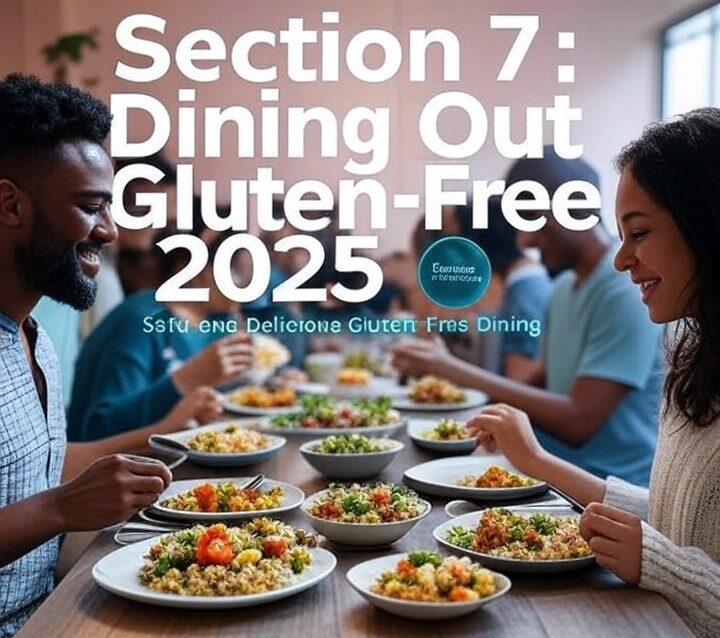
Conclusion
These recipes and tips showcase culinary nutrition for gluten-free diets, blending alternative flours like quinoa and almond with superfoods from our Top 10 Superfoods guide. From fluffy pancakes to savory pizza, they align with anti-inflammatory recipes and healthy cooking tips to promote digestive health and flavor, per 2025 research. Dining out strategies and apps like Find Me Gluten Free (over 600,000 users in 2024) simplify nutritional meal planning, making gluten-free living accessible for celiac disease or sensitivities.
These dishes and practices support personalized diet strategies and sustainable food practices for wellness and eco-conscious eating. Try one recipe this week to master culinary nutrition and elevate your gluten-free meals! Visit our Ultimate Guide to Culinary Nutrition for more special diet insights. Which gluten-free dish will you try first? Share below and join the culinary nutrition movement for a healthier you!
